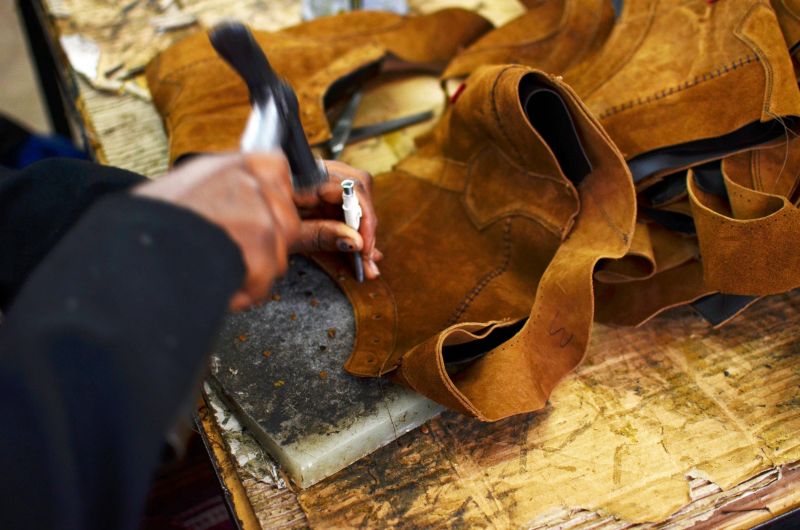Centre to Fund Leather Industry to Check Ganga Pollution
Published on by Water Network Research, Official research team of The Water Network in Government
Central Leather Research Institute is mulling to provide 100 percent funding to leather industry to set up effluent treatment plants along Ganga banks to check pollution in the most polluted stretch of the river.

The National Mission for Clean Ganga (NMCG) has Friday called a meeting all stakeholders from industry including experts from Chennai based Central Leather Research Institute (CLRI), Tamilnadu Water Investment Company Limited (TWIC) to find ways to stop effluents flowing from tanneries into the river.
Stopping flow of effluents from leather industry around Kanpur in Uttar Pradesh has remained a big challenge for the authorities and that is one of the most polluted stretches on the Ganga.
“We are mulling to provide 100 percent funding to leather industry for setting up effluent treatment plants to ensure zero liquid discharge in the river but they will have to bear the cost of operation and maintenance,” said a senior water ministry official.
The official further said that the leather industry association have expressed their concerns that operation and maintenance cost of treatment plants for zero liquid discharge will be huge and they will lose on the market.
“We have called experts in leather sector and they will sit with the industry to find an economical solution so that flow of effluent from tanneries can be stopped,” the official added.
Early this month, Centre has approved Rs 280 cr projects related to sewage treatment plants (STPs) in Haridwar and Varanasi under Namami Gange programme to clean the holy river. More cities are being finalized to set up STPs.
Namami Gange programme was launched as a mission to achieve the target of cleaning river Ganga in an effective manner with the unceasing involvement of all stakeholders, especially five major Ganga basin States – Uttarakhand, Uttar Pradesh, Jharkhand, Bihar and West Bengal.
The programme envisages River Surface Cleaning, Sewerage Treatment Infrastructure, River Front Development, Bio-Diversity, Afforestation and Public Awareness.
Source: The New Indian Express
Media
Taxonomy
- Wastewater Disposal
- Effluent
- River Studies
- Pollution
- River Engineering
- Sewage
- Water Management
- Pollution
- Water & Wastewater
4 Comments
-
The streams should be segregated on the level of COD and TDS. then provide separate CETP's upto 5000mg/L COD, 5000-10000, 10000 and above. etc. Tanneries will come in the third category ( Evaporation will do better)
-
Ecological program “Living Water” - http://www.vrenergie.com/index.php/ecopolis/ecological-program-living-water.html
-
We provide you with a description of the unique Russian technology that allows you to minimize the negative impacts of humans on the environment. In the water, such factors as the chemical absorption of oxygen, biological oxygen absorption, coloring, turbidity are greatly reduced and most importantly, the hazardous xenobiotics from the series of phenols and dioxins are eliminated. Improvement of air and water is achieved without the use of chemical, biological, radiation and medicines, the effect is achieved only by physical influence by means of electromagnetic fields of low frequency. In our work we do not use chlorine or ozone, no other chemicals. The equipment used has a certification according to Eurasian guidelines
-
Can a centralised facility for a cluster designed and Operated by a company with ETP expertise and payment as per effluent metered from source not serve the purpose? Small industrial units may utilise Central assistance and still falter for lack of technical competence and O&M by State Govt. can also not be right solution.